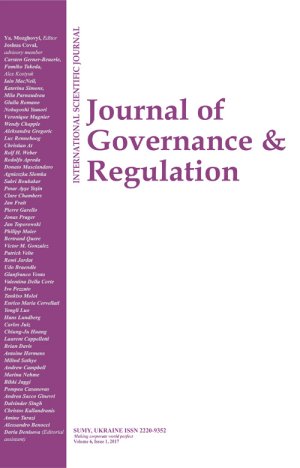
CORPORATE GOVERNANCE, REGULATION AND BANK RISK-TAKING BEHAVIOUR IN DEVELOPING ASIAN COUNTRIES
Download This ArticleAbstract
Using data from ten selected developing Asian countries, this paper investigated empirically the influences of corporate governance and regulations on bank risk-taking behaviour. We found sufficient evidence that corporate governance mechanism has strong effect on the level of risk taken by bank: bank with large owner(s) is associated with higher risk-taking, while board size is found to be negatively related to bank risk level, indicating that the bigger the size of the board, the less risk the bank is willing to take. Additionally, we also found that banks with more powerful CEO tend to engage in less risky activities. Meanwhile, an increase in board independence forces banks to assume more risk. Nevertheless, managerial shareholdings appear to have no direct impact on the level of risk banks undertake. Our results further showed that regulatory pressure brought about by the host-country regulators influences neither banks’ risk-taken levels nor their capital adequacy ratios. However, raising regulatory capital adequacy ratio, instead of forcing banks to reduce their risk level, does induce them to take more risk. Thus, banking regulations do not appear to be effective in developing Asian countries. Other variables, such as loan loss reserve and GDP growth also help to predict bank risk-taken pattern. Nonetheless, bank size has no direct impact on shaping the risk-taking behaviour of banks.
Key words: Banks, Corporate Governance, Risk, Developing Asian Countries
How to cite this paper: Luu, H. N. (2015). Corporate governance, regulation and bank risk-taking behaviour in developing Asian countries. Journal of Governance and Regulation, 4(1-2), 201-223. https://doi.org/10.22495/jgr_v4_i1_c2_p4



















